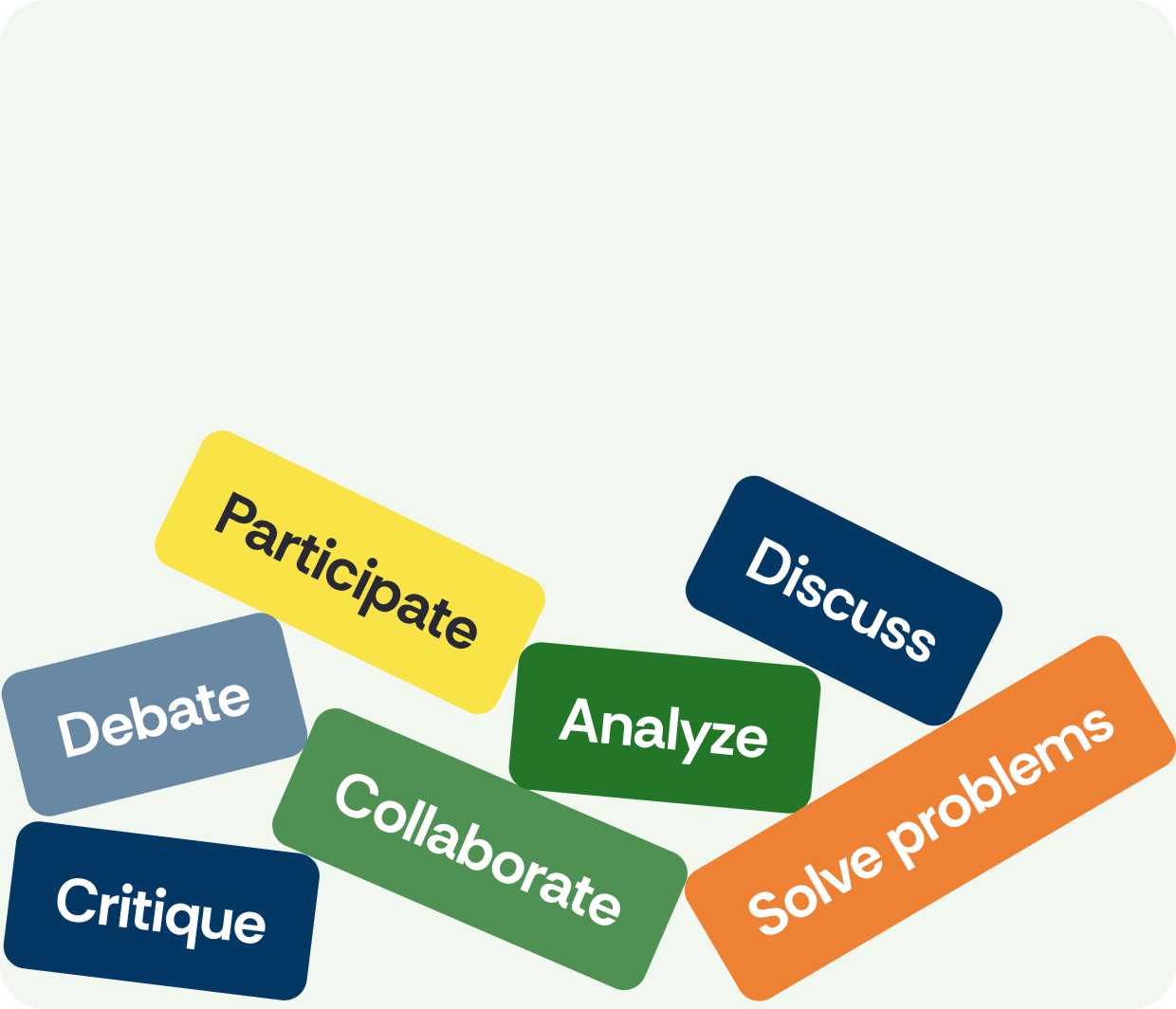Game-Based Learning supported by FeedbackFruits
Spark deeper engagement and tap into intrinsic motivation by weaving game elements—challenges, rewards, and play—into the learning process.

What is game-based learning?
Game-Based Learning uses the principles of games—such as rules, competition, and feedback loops—to create engaging, playful learning experiences. Games are masters at teaching players how to accomplish tasks, so Game-Based Learning taps into learners’ innate desire for exploration and mastery, transforming educational content into interactive challenges. As a result, students gain practical skills and deeper understanding while enjoying the motivating power of play.

Why game-based learning?
By merging entertainment with educational objectives, Game-Based Learning immerses students in hands-on problem-solving that feels natural and rewarding. Research shows that well-designed educational games can boost motivation, foster collaboration, and improve learning outcomes across age groups and disciplines. Students often persist longer in tasks, actively seek feedback, and develop critical thinking skills in the process.
8–12% higher test scores
Students in competitive game-based learning environments tend to score higher on assessments, with the strongest effects in STEM subjects.

Chen, C., Shih, C., & Law, V. (2020)
The Effects of Competition in Digital Game-Based Learning: A Meta-Analysis.
Strengthened engagement by 18%
Studies show that students score higher on tests with digital badges. Public badges can even increase engagement by up to 18%.

Law, V., Jimenez, M. J., Kittinger, L., & Lopez, B. (2024
A Meta-Analysis of Digital Badges in Learning Environments in Educational Settings.
Higher learning gains with gamification
Increase your students’ learning gains by gamifying your classroom, which can even lead to increases in engagement by 15%.

Sailer, M., & Homner, L. (2020)
The Gamification of Learning: A Meta-Analysis.
.avif)
How does FeedbackFruits support game-based learning?
With FeedbackFruits, educators can embed interactive game elements—such as points for timely submissions through its configurable grading capabilities—directly into course tasks, fostering a sense of progress and achievement. Tools like Interactive Document and or Interactive Presentation enable engaging challenges: students can annotate game scenarios, discuss strategies, and give each other feedback.
Instructors can track real-time analytics on student participation, ensuring that everyone remains active in the learning ‘game.’ By seamlessly integrating these features into your LMS, you minimize setup complexity while maximizing student motivation.
Instructors can track real-time analytics on student participation, ensuring that everyone remains active in the learning ‘game.’ By seamlessly integrating these features into your LMS, you minimize setup complexity while maximizing student motivation.
Get started with game-based learning pedagogy using our pre-made learning templates
These templates—designed by experienced educators—offer proven structures for implementing game-based learning pedagogy. Simply select a template, customize it, and launch engaging activities in minutes.
Browse all templatesGame-based learning, directly within your LMS
FeedbackFruits integrates seamlessly with your Learning Management System, making it simple to incorporate game-based learning activities into your existing courses. Whether you teach online, hybrid, or face-to-face, FeedbackFruits ensures that activating student participation is just a few clicks away—no additional overhead, no steep learning curve.





Explore our free resources about game-based learning

Project-/Problem-Based Learning: A guide to success
Gain understanding of team-based learning and how to best implement it in online and hybrid environments.
Read more
Learning design: A guide for creating impactful learning experiences
This webinar explores the best practices from TBL experts at Texas Christian University School of Medicine, and learn how Boston College scaled TBL to foster collaboration and employability skills.
Read more
Team-based learning: A guide to success (2024)
Instructors at Central Michigan University optimized the team-based learning process in a 200-level Biology course with FeedbackFruits learning activities.
Read moreSee what FeedbackFruits learning activities can be used to support game-based learning
Game-based learning is hard. FeedbackFruits makes
it easier.
Unlock the full potential of game-based learning and more with the Learning Design System.
Explore the Learning Design System










